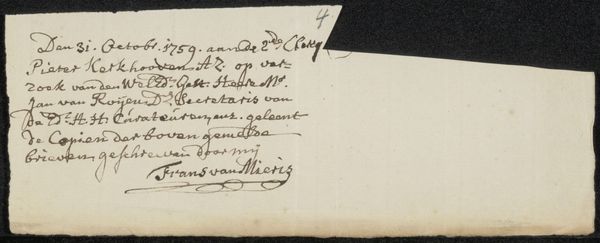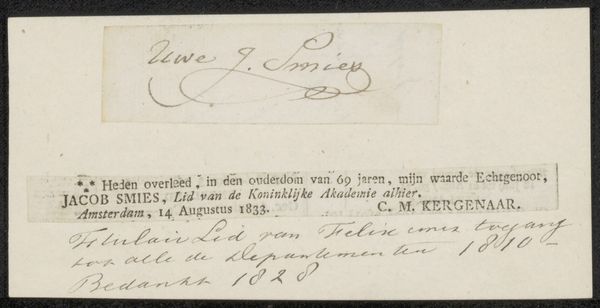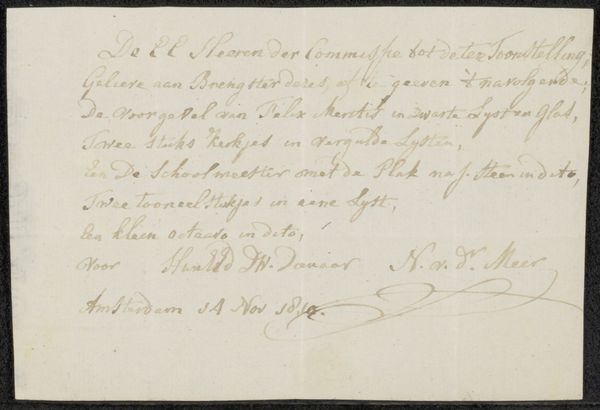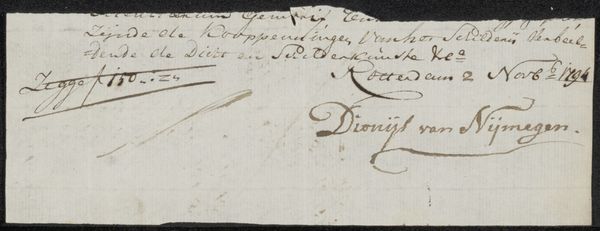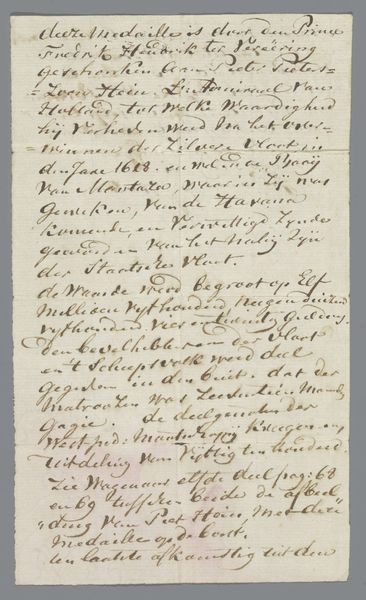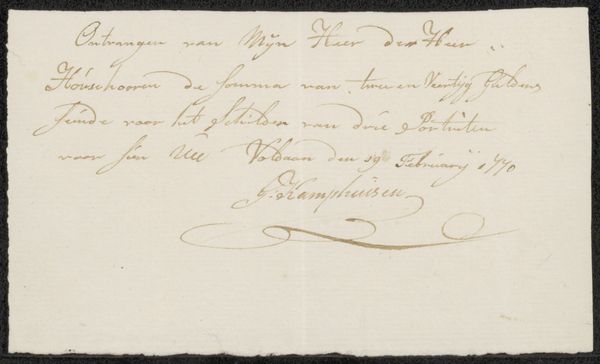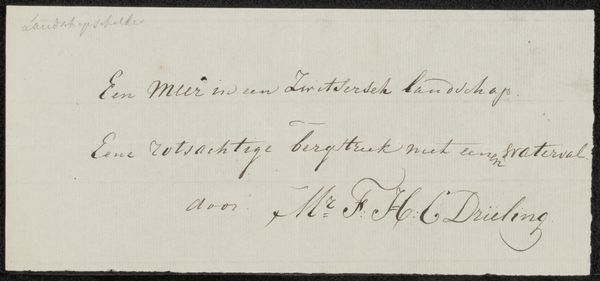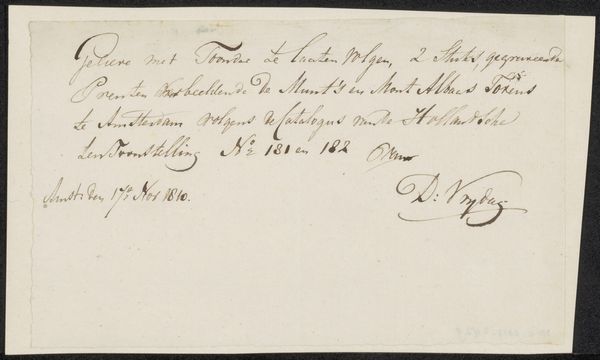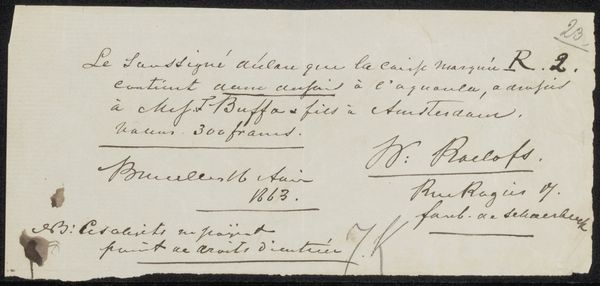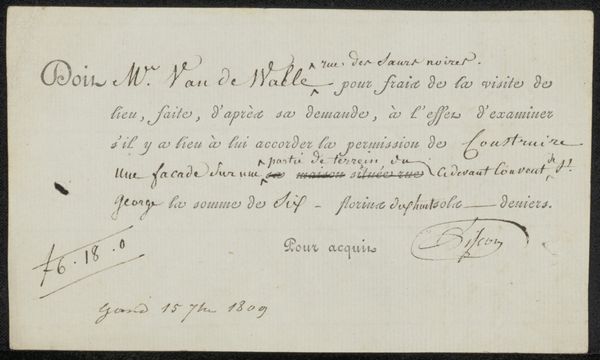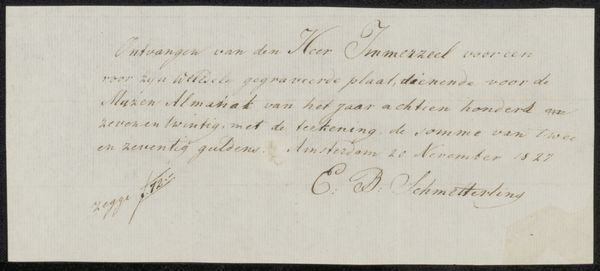
Advertentietekst voor: Johannes le Francq van Berkhey, De Politieke Hollandsche Koemarkt, 1787 1787
0:00
0:00
print, etching, typography, poster
#
hand-lettering
# print
#
etching
#
hand drawn type
#
hand lettering
#
typography
#
poster
#
calligraphy
Dimensions: height 98 mm, width 226 mm
Copyright: Rijks Museum: Open Domain
Curator: Look at the delicate etching on this announcement, dating back to 1787. It is an advertisement for Johannes le Francq van Berkhey’s “De Politieke Hollandsche Koemarkt,” placed by Jacobus van Tertoolen en Comp. What do you make of it? Editor: At first glance, I’m struck by how busy the composition is, a jumble of fonts vying for attention. Yet, within that, I sense a fierce pride in the printed word itself. It feels very...grounded, almost defiant in its materiality. Curator: Yes, consider the socio-political context: 1787 was a time of great upheaval in the Dutch Republic. The text alludes to political satire aimed at the Hollandse Boer, essentially, the Dutch peasant, within the context of political turmoil. Note how "IRONIEK Stukje" and "POLITIEKE" are given emphasis with distinct lettering. What impact does it have for us today? Editor: Well, understanding the physical labor is important. Someone had to meticulously carve this, to manually set the type. The announcement emphasizes that booksellers themselves must handle corrections. It draws attention to the means by which this satire is disseminated. How that message then circulates, and the hands it passes through, is very important to consider. Curator: Precisely! It’s about accessing a public, disseminating the critique among diverse communities, as "Advertentien in de BRIELSCHE COURANTEN" shows. It suggests that by offering these texts at a good price to various actors they sought wide political circulation and sought to give voice to the common experience under social injustice. The design elevates it from mere commerce. Editor: And it uses those accessible and increasingly commercial formats - the newspaper. By underscoring this act of distribution and correcting with book-makers it shows a tangible, democratic, and rebellious assertion of Dutch intellectual freedom at that specific juncture. Curator: Indeed. The etching underscores not only a marketplace of goods but the value of critical thinking. Editor: So much so that it becomes almost performative; the making of this announcement highlights labor and distribution with intent. Curator: Examining how these materials intersected with that era, its ideas, is powerful. Editor: Indeed. Considering it materially contextualizes the political rhetoric—and still echoes its sentiments today.
Comments
No comments
Be the first to comment and join the conversation on the ultimate creative platform.

